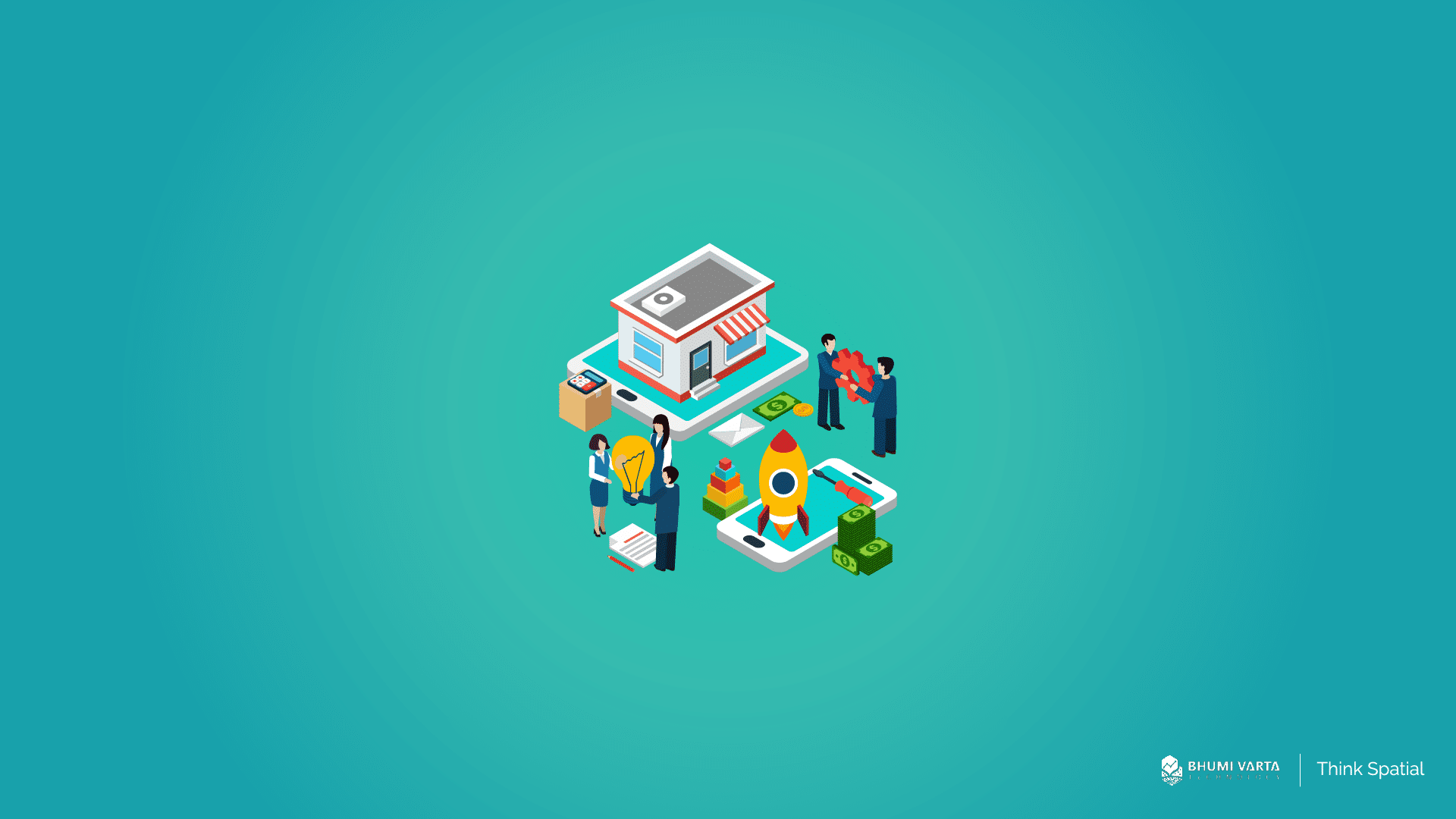In recent years, more and more fields or sectors have been using digital mapping, such as city development, agriculture, natural resource management, and disaster mitigation. So, what is digital mapping? Read on for a complete explanation in this article.
Contents
What Is Digital Mapping?
Digital mapping is the process of creating a map or visual representation of the real world using digital technology.
Digital mapping allows users to see geographic information about specific locations and make analyses based on collected data.
There are 3 ways to create digital mapping, including using geographic information systems (GIS), satellite image processing, and drone mapping technology.
Digital Mapping with GIS
GIS is a system used to create, store, analyse, and present geographic data.
This system allows users to view and analyse information about specific locations, including land types, weather patterns, demographics, and more.
GIS is typically used in digital mapping to create interactive maps that can be used by people with various needs.
Digital Mapping with Satellite Image Processing
Satellite image processing is also used in digital mapping. These satellite images provide a top-down view and can provide information about specific locations or areas.
Satellite image processing is done using computer technology that can turn satellite images into numerical data that can be analysed.
Digital Mapping with Drones
Digital mapping using drones is also increasingly being used. Drones can fly over a specific location and take photos from above. These photos can then be used to create interactive maps and obtain information about the location.
Conventional Mapping vs Digital Mapping
Perhaps some people are still confused about the difference between digital mapping and conventional mapping? Conventional mapping and digital mapping are two different ways of creating maps and representing geographic data.
Conventional mapping is done manually, while digital mapping uses computer technology and software to create and analyze data.
Conventional mapping involves manual measurement and depiction of geographic objects on paper using measurement instruments such as tape measures, compasses, and protractors. This process requires a lot of time and effort, and the results may not be accurate if done traditionally.
Meanwhile, digital mapping uses computer technology and software that can quickly and accurately produce maps. Digital mapping technology such as geographic information systems (GIS) allows users to input data and information into computer programs, and then analyze and visualize data more effectively and efficiently.
Advantages of Digital Mapping
Digital mapping has many advantages compared to conventional mapping.
Higher accuracy
In digital mapping, the data used is geospatial data collected using satellite, aircraft, or drones.
This data has higher accuracy than conventional mapping methods that still use manual measurements. With higher accuracy, digital mapping can provide more accurate and reliable results.
Better efficiency
Digital mapping can be done faster and more efficiently than conventional mapping methods.
Geospatial data used in digital mapping can be collected more quickly and easily.
In addition, specialized software used in digital mapping can also speed up the map-making process.
Ease of maintenance
Another advantage is in terms of maintenance. In conventional mapping, the created map is usually printed and difficult to change or update.
Meanwhile, in digital mapping, maps can be easily and quickly updated. This makes it easier for map users to get the latest and most accurate information.
Increased productivity
In various fields such as agriculture, plantations, and construction, digital mapping can help increase productivity.
With digital mapping, farmers and plantation owners can map their land more accurately and efficiently. This allows them to optimize land use and increase crop yields.
Meanwhile, in the field of construction, digital mapping can help increase efficiency in project planning and implementation.
Cost savings
Digital mapping can also help save costs in the long run. Although the initial cost required to purchase software and equipment for digital mapping is quite high, the use of this technology can help reduce costs in the long run.
In conventional mapping, the cost incurred for manual measurements and map maintenance is quite high. Whereas in digital mapping, these costs can be reduced.
The Example of Digital Mapping
Here are some examples of the application of digital mapping:
Digital Mapping for Business
Businesses can also use digital mapping for various purposes, such as understanding their surroundings, making better decisions, and improving operational efficiency.
Knowing the Location of Customers
By using digital mapping, businesses can collect data about the locations of their customers and their competitors.
This can help businesses in creating better marketing strategies and understanding the competition in the market.
For example, a restaurant can use digital mapping to track the location of its competitors and determine the best location to open a new branch.
Optimizing Logistics
Digital mapping can help businesses optimize their delivery routes and logistics. By using digital mapping, businesses can visualize more efficient routes and reduce delivery time.
This can help businesses save on operational costs and increase customer satisfaction.
Managing Assets
By using digital mapping, businesses can visualize the locations and statuses of their various assets, such as vehicles, machinery, and other equipment.
This can help businesses optimize their asset usage and plan more effective maintenance.
Digital Mapping for Disaster Mapping
Digital mapping can be used to map areas that are vulnerable to natural disasters, such as floods, earthquakes, and landslides.
These maps can help disaster experts estimate potential damage and take necessary preventive measures.
For example, flood risk maps can help governments and communities identify high-risk areas and design early warning systems and evacuation plans.
Digital Mapping for the Environment
Digital mapping can also be used in environmental conservation to map forests, rivers, and wetlands.
These maps can help environmental experts monitor and manage biodiversity and protect endangered species habitats.
For example, land use maps can help communities plan more effective land use and reduce negative impacts on the environment.
Knowing the Location of Consumers with LOKASI Intelligence
Businesses can know the location or origin of consumers using digital mapping. This way, businesses can create accurate marketing strategies.
Businesses can use digital mapping platforms like LOKASI Intelligence. This platform allows users to visualize their data, analyze it, and find the right location for their office, store, or branch.
Additionally, LOKASI comes with telco data that businesses can use to know the location and origin of their consumers.
Learn more about how LOKASI Intelligence can help businesses by contacting email: [email protected] or WA: 087779077750



